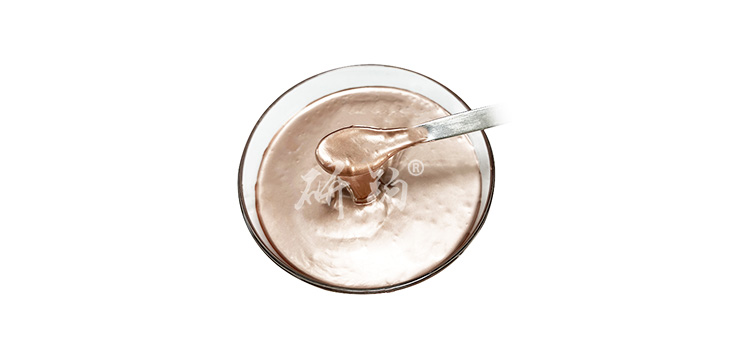Solderable conductive copper pasteA conductive material with high solid content and suitable for various processes has attracted the attention of many readers in the manufacturing industry. The purpose of this article by Advanced Institute Technology is to explore the characteristics, applications, and related process parameters of solderable conductive copper paste, providing target readers with in-depth understanding and guidance on the correct use of this material.
1、 Characteristic analysis
According to the technical specifications, the solid content of the solderable conductive copper paste is 78% ± 2, the viscosity is 90 ± 20 Kcps, and the fineness is ≤ 15. These indicators directly reflect the consistency, conductivity, and particle size of the material, and are one of the most concerned factors for readers when choosing materials.
One of the significant characteristics of solderable conductive copper paste is its high solid content. Traditional conductive materials often have problems such as low solid content and low viscosity, while the high solid content of solderable conductive copper paste can provide better conductivity and play a greater role in the field of electronic manufacturing. In addition, high solid content also helps to improve the adhesion of the material, ensuring a strong bond between the coating and the substrate.
Secondly, the viscosity of the solderable conductive copper paste is moderate, allowing it to adapt to various coating processes. The choice of viscosity has a direct impact on process efficiency and coating quality. Excessive viscosity can lead to poor coating uniformity, while excessively low viscosity can increase coating fluidity, causing waste and unnecessary troubles. The viscosity of the solderable conductive copper paste is controlled within the range of 90 ± 20 Kcps, providing greater flexibility for different manufacturing processes.
Finally, the fineness ≤ 15 of the solderable conductive copper paste is also one of its very important characteristics. Fineness refers to the size of particles in a material, which is directly related to
Conductive copper pasteThe conductivity and smoothness of the coating. Smaller particles help improve the conductivity of materials and the smoothness of coatings, thereby enhancing the overall quality of the product.
 2、 Application Fields
Solderable conductive copper paste
2、 Application Fields
Solderable conductive copper pasteWith its high solid content, moderate viscosity, and suitable fineness, it is suitable for multiple manufacturing industries. Here are several typical applications:
1. Coating of thick silicone adhesive plate: Solderable conductive copper paste can achieve uniform coating on thick silicone adhesive plate, thereby providing good conductivity. This has a wide range of applications in fields such as circuit board manufacturing and electronic component manufacturing.
2. JIG board coating: As a common substrate material, the surface coating of JIG board with solderable conductive copper paste helps improve the conductivity of the connector, thereby enhancing the stability of the entire circuit.
3. Thin silicone plate screen printing: Solderable conductive copper paste is suitable for various screen printing processes, which can achieve fine pattern printing and provide convenience for the production of electronic products.
3、 Process parameter analysis
Solderable conductive copper paste is suitable for a series of specific processes. The following will analyze the process parameters such as stirring, coating, cleaning, drying, sintering, storage, and packaging.
1. Mixing: Grind at low speed for 24 hours or manually mix for more than 10 minutes before use. Stirring is a crucial step in ensuring the uniformity and fluidity of conductive copper paste. Low speed rolling or manual three-dimensional stirring can fully disperse conductive copper particles and eliminate agglomeration phenomena between them.
2. Coating: Suitable for various substrate materials such as thick silicone adhesive plates, JIG plates, and thin silicone adhesive plates. When coating, it is necessary to master the appropriate coating thickness and uniformity to ensure the conductivity and adhesion of the coating.
3. Cleaning: Anhydrous ethanol or turpentine can be used for cleaning. The main purpose of cleaning is to remove impurities and pollutants generated during the process, in order to ensure the purity and quality of the coating.
4. Drying: A chain type hot air oven is used, with a temperature of 100 ℃ and insulation for 10 minutes. Drying can quickly evaporate the solvents in the coating material, thereby improving the curing speed and adhesion of the coating.
5. Sintering: The sintering temperature is 780-880 ℃, and the insulation time is 10 minutes, keeping the oxygen content below 5PPM. Sintering is a key step in the formation of conductive copper coatings, which can improve their conductivity and stability.
6. Storage: The storage temperature should be between 18-25 ℃, and the storage time should not exceed 3 months. Appropriate storage conditions can prevent the conductive copper paste from deteriorating and particle agglomeration, thereby maintaining its excellent performance.
7. Packaging: In units of 500g/1000g/2000g, plastic cans are used for packaging. Appropriate packaging can protect conductive copper paste from external environmental influences and extend its service life.
in summary,
Solderable conductive copper pasteWith high solid content, moderate viscosity, and suitable fineness, it is suitable for various manufacturing industries. In order to achieve satisfactory coating results, readers need to pay attention to the corresponding process parameters in stirring, coating, cleaning, drying, sintering, storage, and packaging. Only by correctly understanding and mastering these key factors can we maximize the advantages of solderable conductive copper paste, improve product quality and production efficiency.





